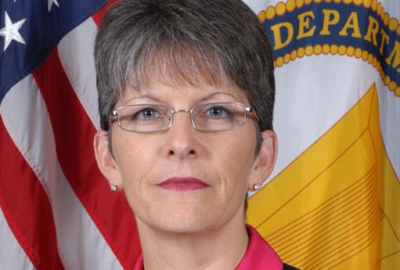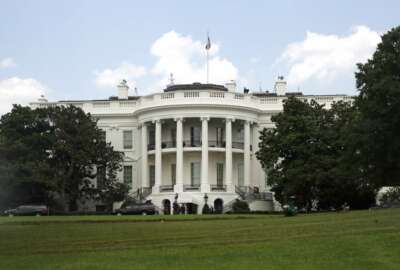
Federal workforce needs to be a priority — no really, a top priority this time, advocates say
When the dust has settled, good government groups and employee organizations say the next administration faces a talent and leadership crisis in the federal...
There have been lots of images that have defined Election Day, or week.
That signature electoral college map with red and blue states. A close-up image of a county you’ve never been to. Tired election officials at the podium, asking reporters to repeat their questions.
For me, the most striking image has been of those dreary office buildings, where masked-up workers are sorting through ballots into the night.
This audience needs no reminder, but those are public servants we’ve been watching for the past week now, counting our votes from that big warehouse in Philadelphia or the county election site in Arizona.
After it’s all said and done, someone new may be sitting in the White House in three months, or not. Like the state and local public servants we’ve seen on TV this past week, the vast majority of the career federal workforce will continue doing their jobs regardless of the outcome, just as they always have been.
Good government-group types and other affinity groups have spent much of the last six months thinking about what a new administration might take on in the next four years.
They all offer slightly different takes. But there’s a glaring common goal: They all want the next administration to make the career federal workforce a priority.
Really, a top priority this time.
The Partnership for Public Service described the current situation as a leadership and talent “crisis.” Nearly two-thirds of the Senior Executive Service are eligible to retire by the end of fiscal 2023.
Elsewhere in the federal workforce, one-third of federal employees on board at the end of fiscal 2019 are eligible to retire at the end of 2023.
Just 6.3% of the federal workforce was under the age of 30 as of June 2019.
In a recent survey of nearly 1,000 federal executives, the Partnership for Public Service painted a bleak picture of the workforce. The survey, which the Partnership, Princeton University, Vanderbilt University and Georgetown University administered earlier this year, found 55% of federal executives believed their agencies could recruit the best people.
Roughly 36% said top leadership are held accountable for recruiting top talent, and 32% said their agencies had a recruitment strategy aligned to their organization’s needs.
Just 45% said their agencies have enough employees to do a quality job.
That last survey figure is a little frightening given the present moment, when a global pandemic is still raging. The public relies on these agencies to do a “quality job,” especially when vaccines and infectious diseases are involved.
The Partnership is recommending a national federal hiring campaign to encourage young talent to join government. It wants a “clear mandate” and qualified leadership for the Office of Personnel Management. OPM should develop a proposal for a brand new, modern personnel system that will more effectively attract and retain top talent.
Leadership development and training opportunities for supervisors and executives should be a top priority, the Partnership said.
The Senior Executives Association and the Center for Organizational Excellence issued a 140-page report this summer, where they argue the federal workforce doesn’t have the capacity to handle all the challenges today’s world has thrown at it.
To address their concerns, SEA and COE recommended legislation and plenty of places for lawmakers to step in, including a reorganization of the Office of Personnel Management and the creation of a select committee on the federal workforce in Congress.
The National Academy of Public Administration took a different path. Sure, constructive input and action from Congress would be nice, but it’s just not realistic, the fellows said.
They made a handful of recommendations that a future administration could accomplish administratively, like a national hiring campaign for federal jobs and an executive order on the civil service.
“An executive order on the civil service should be signed on day one,” the NAPA reports reads. “The EO should not only identify federal workforce management as a crisis, but also direct maximum use of authority under existing law to develop the modern civil service in line with the recommendations above.”
Those recommendations include a real focus on leadership development in government and better tools to assess and recruit top talent, an initiative that’s technically underway in the current administration.
Again, the fellows mentioned OPM, which they said should be “refocused” and equipped with the right resources. The president or president-elect should name a new nominee to be OPM director soon, before Inauguration Day.
“The elevation of the importance of the public service should begin immediately following
the November election, with the president or president-elect emphasizing their commitment to
take steps to lay the groundwork for a modern civil service,” the NAPA report reads.
Seems tough to imagine in today’s environment, doesn’t it?
Nearly Useless Factoid
By Alazar Moges
Rhode Island has no county governments. It is divided into 39 municipalities each having its own form of local government.
Source: Rhode Island Government
Copyright © 2025 Federal News Network. All rights reserved. This website is not intended for users located within the European Economic Area.
Nicole Ogrysko is a reporter for Federal News Network focusing on the federal workforce and federal pay and benefits.
Follow @nogryskoWFED





